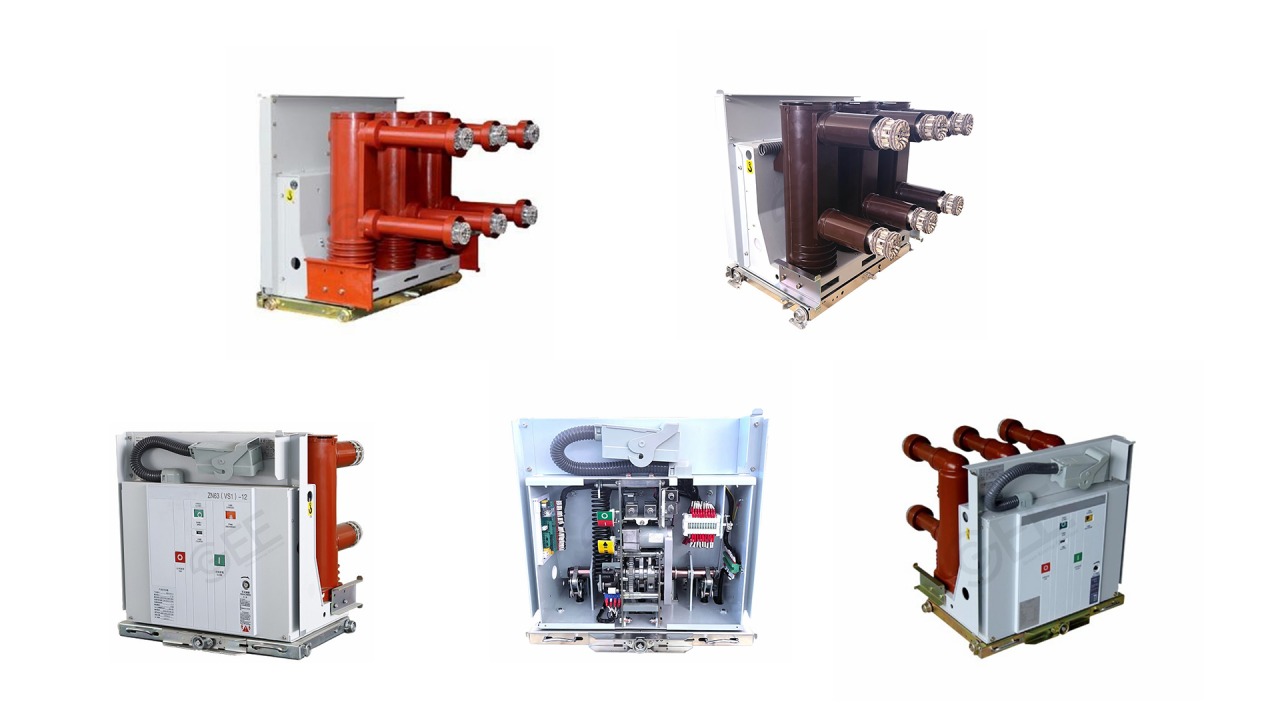Introduction to Vacuum Circuit Breakers
A vacuum circuit breaker is an essential component in modern electrical systems, known for its superior performance, reliability, and long service life. Unlike traditional circuit breakers that use air, oil, or gas for arc extinction, the Vacuum circuit breaker operates by interrupting the current flow in a vacuum environment. This unique feature significantly enhances its efficiency and makes it ideal for medium-voltage applications. As industries evolve, choosing the right vacuum circuit breaker involves comparing both cost and performance to ensure the best value for investment.
Understanding the Working Principle of a Vacuum Circuit Breaker
The vacuum circuit breaker operates by creating and extinguishing an electrical arc in a vacuum chamber. When contacts inside the breaker separate, an arc forms, but it quickly extinguishes because the vacuum prevents ionization. This rapid arc extinction ensures minimal damage to the contacts and results in a highly durable system. The absence of gases or oils also makes the vacuum circuit breaker environmentally friendly and low-maintenance compared to other types of breakers.
Key Factors Affecting Vacuum Circuit Breaker Costs
When comparing vacuum circuit breaker costs, several factors come into play. The first is the voltage and current rating; higher ratings generally mean higher costs. The brand, manufacturing quality, and technological advancements also influence the price. Additionally, the design complexity and additional safety features can affect the overall cost of a vacuum circuit breaker. For example, a vacuum circuit breaker designed for industrial-grade performance will cost more than one intended for small-scale use.
Performance Advantages of Vacuum Circuit Breakers
The vacuum circuit breaker offers numerous performance benefits that justify its cost. One of the primary advantages is its high dielectric strength, which ensures efficient arc interruption. It also boasts faster operation times, minimal maintenance requirements, and exceptional mechanical durability. The vacuum circuit breaker can perform thousands of operations without performance degradation, making it ideal for critical systems. Additionally, it ensures consistent performance even under challenging conditions, such as fluctuating voltages or frequent load changes.
Comparing Vacuum Circuit Breaker Costs to Other Breakers
When comparing costs, the vacuum circuit breaker may appear more expensive initially than air or oil circuit breakers. However, its long-term benefits often outweigh the initial investment. Air circuit breakers require regular maintenance, while oil circuit breakers pose environmental and fire hazards. In contrast, the vacuum circuit breaker requires minimal servicing, offers better performance, and has a longer operational lifespan. Therefore, when calculating total ownership costs, the vacuum circuit breaker often emerges as the most cost-effective option.
Energy Efficiency and Environmental Impact
A vacuum circuit breaker is not only efficient but also environmentally sustainable. It eliminates the use of harmful substances like oil or SF6 gas, which are common in other breaker types. This makes the vacuum circuit breaker a preferred choice for green energy projects and eco-conscious industries. Furthermore, its lower power loss during operation contributes to higher energy efficiency, reducing overall power consumption and operational costs.
Maintenance and Reliability Considerations
Maintenance is a crucial aspect when evaluating the cost and performance of any electrical component. The vacuum circuit breaker stands out due to its minimal maintenance requirements. Since there are no gases or oils to monitor, and the contacts experience less wear, it reduces downtime and maintenance expenses. Regular inspections are usually sufficient to keep a vacuum circuit breaker in optimal working condition. This reliability translates into reduced operational interruptions and increased system stability.
Applications of Vacuum Circuit Breakers
The vacuum circuit breaker is widely used across various sectors, including industrial plants, power distribution networks, and renewable energy systems. It is particularly suitable for medium-voltage applications ranging from 3.3 kV to 33 kV. In manufacturing facilities, the vacuum circuit breaker protects machinery from overloads and short circuits. In power stations, it ensures safe distribution and enhances grid reliability. Due to its adaptability and robust design, the vacuum circuit breaker has become the industry standard for modern power systems.
Cost-Performance Balance for Long-Term Value
While upfront costs may differ, the real value of a vacuum circuit breaker lies in its long-term performance. Its high efficiency, reduced maintenance, and longer lifespan significantly lower the total cost of ownership. Many manufacturers now offer vacuum circuit breakers that combine affordability with superior design, ensuring customers receive both performance and savings. When evaluating the total investment, users should focus on lifecycle costs rather than just purchase price. This approach highlights the vacuum circuit breaker as a cost-effective and high-performance choice.
Choosing the Right Vacuum Circuit Breaker Manufacturer
Selecting the right manufacturer plays a major role in determining both the cost and performance of a vacuum circuit breaker. A reputable manufacturer ensures high-quality materials, precision engineering, and rigorous testing standards. Investing in a trusted brand may cost slightly more, but it guarantees durability and reliability. Before making a purchase, it’s essential to compare product specifications, warranty coverage, and customer support services offered by vacuum circuit breaker suppliers.
Future Trends in Vacuum Circuit Breaker Technology
The vacuum circuit breaker industry continues to evolve with advancements in automation and smart grid integration. Modern vacuum circuit breakers are now equipped with digital monitoring systems that track performance metrics and predict maintenance needs. These innovations enhance reliability and allow operators to make data-driven decisions. As renewable energy and smart grid systems expand, the vacuum circuit breaker will play a vital role in maintaining stable and efficient electrical networks.
Conclusion
In conclusion, comparing vacuum circuit breaker costs and performance reveals that this technology provides exceptional long-term value. Although the initial cost may be higher than traditional breakers, the superior performance, energy efficiency, and low maintenance make the vacuum circuit breaker a more economical choice over time. Whether used in industrial, commercial, or utility applications, the vacuum circuit breaker delivers unmatched reliability and safety. As the demand for efficient and sustainable power systems grows, the vacuum circuit breaker will remain the preferred solution for ensuring stable electrical performance and cost efficiency.



